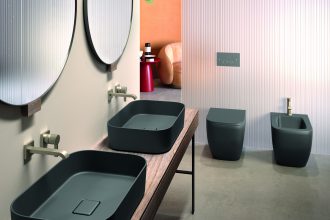Green Gamechanger: How Plants Are Transforming Buildings Into Thriving Vertical Forests

As the UK’s population continues to climb, expanding cities are eating away at the country’s already limited green space, with over half of all forests, gardens and farmland lost to new development every year. With urbanisation showing no signs of slowing, and with public demand for greener, healthier public spaces increasing, planners, designers and architects are looking to urban regeneration to transform cities into vibrant, sustainable destinations.
Green space is now considered to be an essential element of future city living, and with benefits ranging from improving physical and mental health to supporting biodiversity, plants have a crucial role to play in enhancing the long-term wellbeing of city dwellers. While foliage is becoming a common sight on new developments, Steve McIntyre, Urban Environment Consultant, ANS Global outlines why it’s the UK’s existing buildings which are the key to a greener future.
Creating a positive difference within inner city environments, living walls and green roofs have become a prominent visual stamp of ethical design, commended for their ability to transform an urban eyesore in a sustainable design statement. While cities such as London are championing their application within new developments as part of new urban greening policies, retrofits and regeneration projects can be a quicker and more efficient option to reintroduce green space back into existing communities.
Installed onto wasted vertical space, living walls can transform even the most unlikely structure into a thriving oasis, from concrete car parks and listed buildings, to dated residential properties and developments. Reducing waste by utilising the exterior of an existing structure, green installations can also go a long way in securing approval from planners, with local authorities often looking favourably on designs which promote urban greening.
With over 90% of the world’s population living in areas where air quality exceeds recommended guidelines, living walls offer a range of benefits to tackle the problems presented by densely populated cities, including filtering out harmful toxic pollutants generated by vehicles, as well as restoring nature and wildlife in urban areas. Reintroducing green space back into communities can also have a positive effect on mental health and well-being, with plants shown to have an impact on occupant mood and stress levels; while creating places where people want to live, work and socialise.
When applying to existing structures, living walls camouflage a build’s exterior, while protecting it from aging and the elements. As well as moderating temperatures and improving overall efficiency – even for older buildings – in some cases, living walls can also increase a property’s value. Applicable to almost any surface and often featuring a variety of wall-mounted plants, from vibrant flowers and lush foliage, living walls provide an opportunity to maximise outdoor space in urban areas where accessible green space is limited.
Working with a living wall specialist is strongly advised to ensure that the correct method of installation complements and protects the structure. For example, listed buildings require a more careful approach, with a steel frame installed first to a build’s exterior. Leaving the building’s exterior undisturbed and protected, the living wall is then mounted onto the frame, doubling up as a natural defence to a listed exterior.
As a sustainable, green approach to traditional rendering, specialists will also be able to advise on the type of plants needed to ensure the feature thrives in the long term, while integrating and enhancing the environment which surrounds it. Often arriving as a modular system, the installation process is relatively simple, while automated irrigation systems help keep maintenance to a minimum.
With space only set to become more limited, living walls are an efficient green solution to not only reintroducing nature back into communities, but also in adapting to rising global environmental pressures. Paving the way for greener design and offering lasting social, environmental, cultural and economic benefits, plants are the key to a healthier construction and development future, helping to transform cities into living, breathing urban forests.
Steve McIntyre, Urban Environment Consultant, ANS Global.


